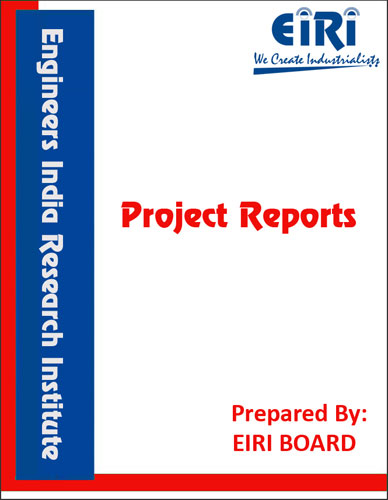The project report includes Present Market Position and Expected Future Demand, Market Size, Statistics, Trends, SWOT Analysis and Forecasts. Report provides a comprehensive analysis from industry covering detailed reporting and evaluates the position of the industry by providing insights to the SWOT analysis of the industry.
Ayurvedic system of medicine is as old as the Vedic age. Now–a–days people give preference to the Ayurvedic medicines as the allopathic medicines are costlier and have side effects. Ayurvedic medicines are based on plants, animals extract and minerals both in single ingredient drugs and compound formulations, however, Ayurveda does not rule out any substances from being used as a potential source of medicine. Ayurvedic compound formulations are mainly divided into two groups viz. (1) Kasthausadhi (predominantly plant drugs) and (2). Rasausadhi (predominantly metals and minerals).
There are several categories of Kasthausadhi formulations such as Asavaristra, Avleha, Grafa Churena, Taila etc. and of Rasausadhis such as Bhasma, Pisti, Lauha, Kapibadkva, Rasayana etc. The Ayurvedic drugs are derived from vegetable sources from the various parts of the plant like root, leaf, flower, fruit extrude or plant as a whole.
Ayurvedic system has its origin in antiquity in our country which has been dedicated to the cure of innumerable ailments. It has been most indelible system for treatment which invariably stood to the test of time.
India abounds in medicinal plants and more than 75% of the vegetable drugs included in pharmacopias are available in the country.
Ayurvedic medicines have been derived from variegated medicinal plants. Forests abound in various medical plants from which various herbs are collected and herbal/ayurvedic medicines are made out of than
Ayurveda, Unani, Siddha, Emchi (Tibetan) and Prakrtika Cikitsa (Naturopathy) are the various traditional systems of medicine still prevalent in India.
The word `Ayurveda’ is composed of two Sanskrit terms, viz., `ayus’ meaning `life’ and `veda’ meaning the `knowledge’ and taken together, it means the “Science of Life”. However, in a limited sense, it is always used to imply “the Science of Medicine”. Charaka has defined ayurveda as the “Science through the help of which one can obtain knowledge about the useful and harmful types of life (hita and ahita ayus), happy and miserable types of life, things which are useful and harmful for such types of life, the span of life as well as the very nature of life.
There has been a tremendous work on Ayurveda viz. Astamga Hardaya which deals with drugs, their intricate composition and pharmacologial action. This system has a great efficacy in eradicating ailments from their root cause, though the action of Ayurvedic medicines way slower.
Herbal Hair Oil:-
Herbal hair oil like (Ayurvedic) like hair oil is gaining an immense prominence in modern times.
The herbal/ayurvedic and medicated hair oils are used as medicine hair tonic. The herbal oil like banphool oil is exhibiting its versatility owing to its embalming effect in alleviating headache and cause soothing effect.
In allophatic field of medicines, those drugs used for analgesic purpose way have some side effects, but as the oil is basically made from herbs extracts which are naturally occurring, so it is free from any side effects or contra indications.
The contents used in the preparation or this oil are extracts or bahera, amla, hartago, lawanga, chandan (sandal wood oil), kewara, jatamausi, along with kapur (camphor), pudina salts and tin oil.
INTRODUCTION
USES & APPLICATIONS
B.I.S. SPECIFICATIONS
MARKET SURVEY
STATUS OF AYURVEDA IN INDIA
MODERN MARKET DEVELOPMENTS
MANUFACTURERS/SUPPLIERS/EXPORTERS OF AYURVEDIC PHARMACY PRODUCTS 25
BROAD OUTLINE OF MANUFACTURING PROCESS
IMPORTANT PLANT AND MACHINERY
MANUFACTURING PROCESS OF AYURVEDIC MEDICINES
MANUFACTURING PROCESS OF AYURVEDIC/HERBAL TABLETS
MANUFACTURE OF CAPSULES
AYURVEDIC PILLS/TABLETS
MANUFACTURE OF HARD CAPSULES
MANUFACTURE OF OINTMENTS AND PASTES
PROCESS OF MANUFACTURE OF AYURVEDIC PAIN BALM OINTMENT
FORMULATION OF HERBAL HAIR OIL
REQUIREMENT OF RAW MATERIALS
PROCESS OF MANUFACTURE OF HERBAL HAIR OIL
ROCESS FLOW DIAGRAM FOR THE MANUFACTURE OF HERBAL HAIR OIL
SALIENT FEATURES OF DECOCTION PROCESS
FORMULATIONS OF AYURVEDIC MEDICINES
SHILAJIT TABLETS
FORMULATION OF SHILAJIT TABLETS
COATED TABLETS
AYURVEDIC TABLETS FOR BODY PAIN
COATED TABLETS- LIVER TAB
OTHER AYURVEDIC FORMULATIONS OF CAPSULES
FORMULATION OF LIQUID PAIN BALM
RELEASING AYURVEDIC MASSAGE OIL
FORMULATION OF FACE CREAM
FORMULATION OF MASSAGE & BODY OIL
MESSAGE OIL FOR WOMEN AND CHILDREN
ANTISEPTIC CREAM FOR CUT, BURN & WOUNDS
FORMULATION OF EMULSIFYING OINTMENT BASE
MANUFACTURING PROCESS
MANUFACTURING DIAGRAM
AYURVEDIC SHARBAT
FORMULATIONS
MANUFACTURING PROCESS OF SHARBAT
PROCESS FLOW SHEET OF SHARBATS
AYURVEDIC DANT MANJAN
PROCESS OF MANUFACTURE OF DANT MANJAN
PROCESS FLOW DIAGRAM FOR THE MFG OF AYURVEDIC
DANT MANJAN
PLANT LAYOUT
SUPPLIERS OF PLANT AND MACHINERY
SUPPLIERS OF PACKAGING MATERIALS
APPENDIX – A :
1. COST OF PLANT ECONOMICS
2. LAND & BUILDING
3. PLANT AND MACHINERY
4. FIXED CAPITAL INVESTMENT
5. RAW MATERIAL
6. SALARY AND WAGES
7. UTILITIES AND OVERHEADS
8. TOTAL WORKING CAPITAL
9. COST OF PRODUCTION
10. PROFITABILITY ANALYSIS
11. BREAK EVEN POINT
12. RESOURCES OF FINANCE
13. INTEREST CHART
14. DEPRECIATION CHART
15. CASH FLOW STATEMENT
16. PROJECTED BALANCE SHEET



